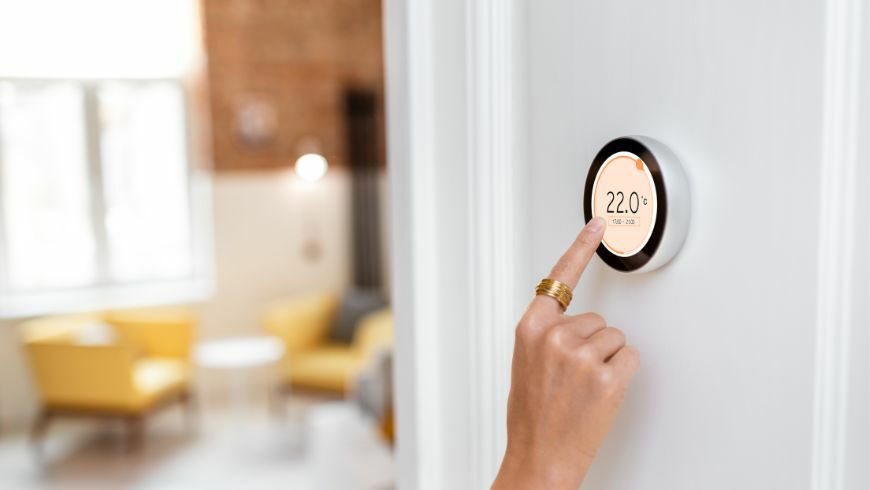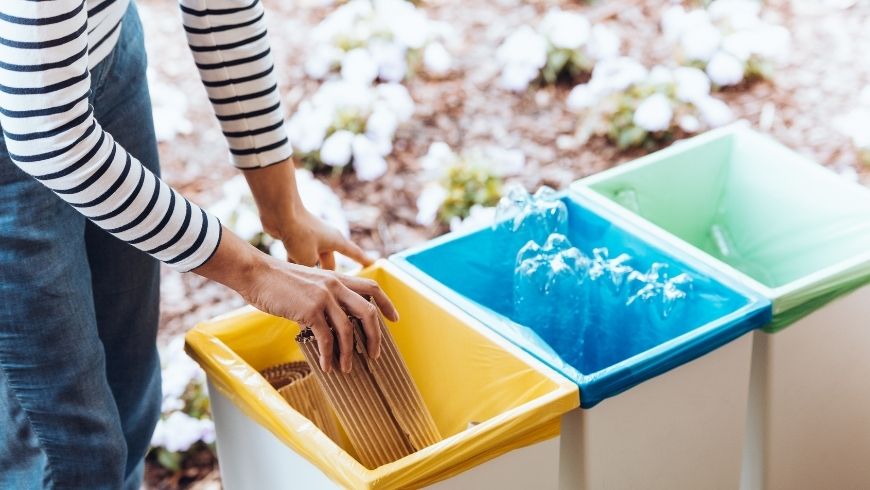You don’t need a complete remodel to make your rentals more efficient, desirable, and profitable. Thoughtful upgrades and smarter operations make the biggest difference—and pay you back through lower utility costs, stronger tenant retention, and higher perceived value. The key is picking moves that work across different buildings and budgets, then executing them with discipline.
From smart controls to low-flow fixtures, the ROI compounds when you connect changes into a simple, measurable plan. Below are practical steps you can implement quickly, along with tips to avoid common mistakes and keep maintenance simple.
1) Start with Energy Where ROI Is Fastest

Before chasing flashy tech, you improve the envelope and the systems that run every minute of the day. Insulation, air sealing, and efficient lighting deliver predictable savings and fewer comfort complaints. You can phase these changes unit by unit without disrupting occupancy.
Start with a basic walkthrough or utility data analysis to identify leaks, poor insulation, and stale HVAC schedules. Rank fixes by cost-to-impact: LED retrofits, weatherstripping, and attic insulation usually pay back fastest.
Convert insights into a simple 90‑day punch list with estimated savings and assigned owners. If you manage several properties, create a shared spreadsheet to track progress, target payback periods, and allocate incentives.
Quick energy wins that usually pay off fast:
- Replace hallway and outdoor lighting with motion-sensing LEDs.
- Seal gaps around ductwork, windows, and doors using foam or caulk.
- Replace outdated thermostats with programmable models.
- Install ceiling fans to reduce summer cooling loads.
Upgrade to LEDs and smart controls first
Swap common-area bulbs to ENERGY STAR LEDs and add occupancy sensors in hallways, laundry rooms, and storage areas. In units, pair LEDs with smart plugs or outlet timers for window ACs and space heaters.
Set a default “off” schedule for vacant units to stop energy drift between turns. Encourage tenants to report malfunctioning lights quickly to maintain full efficiency.
Seal the building envelope to cut waste at the source
Air leaks around windows, doors, and penetrations make HVAC work harder. Use blower-door results (if available) to target sealing and add door sweeps or gaskets where drafts are obvious.
Combine with basic duct sealing and MERV 8–11 filters to stabilize comfort and reduce dust calls. Make this part of annual preventive maintenance rather than a one-off fix.
2) Smart Thermostats and Submetering That Tenants Actually Use

Smart controls are only smart if they’re set up, labeled, and supported. The goal is to reduce set‑and‑forget waste without annoying residents. Submetering builds accountability and gives you clean data to tune operations.
Pick models that support lockable min/max setpoints, temperature hold, and easy scheduling. Pre-configure seasonal profiles (heating and cooling) and post a one-page guide in each unit. For short-term rentals, enable geofencing and auto-away. Tenants appreciate simplicity—avoid models that require multiple apps or confusing setup.
Add water and electric submetering where it’s practical
If you bill back utilities, submetering aligns costs with usage and uncovers leaks faster. Aim for pulse-output meters you can read remotely or at least quarterly.
Even when you keep utilities in-rent, submeters give you the data to justify upgrades and educate heavy users. Some regions now offer rebates for submeter installation—take advantage while funding lasts.
Use analytics to catch drift and anomalies
Pull monthly reports for runtime hours, extreme setpoints, and unusual spikes. Create simple rules: if the runtime increases 25% month over month with similar weather, inspect filters and seals. For buildings with common HVAC, add supply/return temperature logging to find units driving system strain. Over time, this data helps you identify which properties need deeper retrofits.
3) Water-Saving Fixtures and Leak Defense

Water waste kills NOI through both bills and damage. Low-flow doesn’t have to mean low comfort—modern fixtures feel better and last longer when installed correctly.
- Use 1.1–1.28 gpf toilets, 1.5 gpm showerheads, and 1.0–1.5 gpm bathroom faucets from brands with replaceable cartridges.
- Keep two spare cartridges and flappers per building to cut repair time.
- Document SKUs so your team orders consistently.
- Encourage tenants to report slow leaks early with an easy text or portal option.
- Add quarter-turn shutoffs under sinks and behind toilets to speed repairs.
- Place leak sensors at water heaters, under kitchen sinks, and near laundry machines— connect them to SMS alerts.
- Train staff to treat repeated alerts as a fixture replacement trigger—not just a mop-up.
- Track water usage data to see which buildings trend above average and need deeper checks.
Capture rain and reuse where codes allow
For small multifamily, rain barrels feed irrigation and reduce stormwater fees. Use drip lines with soil moisture sensors to avoid overwatering. Post clear signage so residents understand the system and don’t tamper with lines or timers. Simple education often prevents misuse.
Best water-saving upgrades for 2025:
- Touchless faucets with aerators to control flow automatically.
- Smart irrigation controllers are tied to local weather data.
- Laundry-to-landscape graywater systems in duplex or triplex settings.
- Leak-detection systems connected to building-wide shutoff valves.
4) Low-Waste Living: Make Recycling and Reuse the Default

Residents recycle more when bins are obvious, labeling is clear, and penalties are rare. Your role is to remove friction and make the right behavior the easiest choice. Choosing to rent a dumpster can also come in handy as the dumpster rental company can take care of recycling and disposal.
Place clearly labeled bins (paper, plastic/metal, glass) at the most traveled exit to the parking area or alley. Use large-font pictograms and examples specific to your city’s rules. Keep lids closed and swap to pest-resistant models if contamination is common. Clean bins regularly—visual cleanliness drives higher participation.
Add a bulky-item and e‑waste plan
Quarterly e‑waste drop‑offs and a scheduled bulky-item day cut illegal dumping and hallway clutter. Post the calendar in elevators, lobbies, and the resident portal.
Partner with a local recycler and share diversion stats in your monthly newsletter. Data transparency builds trust and engagement.
Encourage reuse before recycling
Set up a “give-take” shelf or a small storage nook for usable household items during move-outs. Add rules (clean items only, 7‑day limit). Photograph the shelf monthly for your marketing—prospects love seeing simple community perks. Consider adding a seasonal clothing swap to promote reuse and foster community.
5) Materials, Air Quality, and Healthy Cleaning

Focus on durable, low‑VOC materials, and train cleaners to use products that won’t undermine indoor air.
Use third‑party verified low‑VOC products and record brand + color in a finishes schedule. For flooring, choose durable options with published emissions data—seal concrete where appropriate to reduce dust and moisture migration.
Avoid cheap vinyl with strong plasticizers—it costs you in complaints and turn costs. Think in lifecycle terms: quality materials extend replacement cycles and reduce landfill waste.
Ventilation beats fragrance every time
Install quiet bath fans with timers or humidity sensors and ensure kitchen hoods vent outside. Replace noisy fans during turns—tenants actually use quiet fans. If odors are an issue, investigate moisture and ventilation instead of masking with scents. Regular duct cleaning every 3–4 years maintains airflow and indoor health.
Green your cleaning SOPs
Standardize on concentrated, third‑party‑certified cleaners and microfiber. Color-code cloths to prevent cross‑contamination and extend their life with low‑heat laundering. Track supply use per unit to detect over-application and reduce residues that worsen allergies. Consider training sessions with staff to align practices across all properties.
6) Green Leasing, Incentives, and Resident Engagement

Policies lock in savings long after the paint dries. A simple green lease addendum, plus the right nudges, helps residents keep performance gains without micromanagement.
Define setpoint ranges, filter change access, balcony plant watering rules, and trash sorting expectations. Keep it friendly and practical. Focus on shared savings. Include permission to enter for filter swaps and leak sensor maintenance. Provide a digital copy so residents can easily review it before signing.
Incentivize good behavior with small, visible rewards
Offer a monthly raffle for units that meet energy or water targets or maintain perfect recycling compliance. Gift cards or rent credits are enough to change habits.
Share building‑level savings quarterly so residents see progress. Visual dashboards in lobbies can further motivate positive action.
Onboarding and seasonal refreshers
At move‑in, hand residents a one‑page “Green Living in Your Building” guide with QR codes to thermostats, recycling rules, and maintenance requests.
Send two seasonal emails per year (heating and cooling changeover) with quick reminders and links to report issues early. Regular communication makes sustainability second nature.
Conclusion
You focus on the envelope, the controls people actually touch, and the fixtures that run every day. Then you backstop it all with data, simple policies, and maintenance habits that survive staff turnover. The result is a property that feels better to live in and cheaper to operate—without chasing trends that don’t last.
Prioritize quick wins, measure what matters, and communicate with residents like partners. Do that, and your buildings become easier to manage, your units turn faster, and your marketing gains a credible story: energy‑efficient rental property living that tenants can see, feel, and afford.
Cover image: Photo by Jakub Zerdzicki on Pexels




